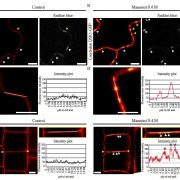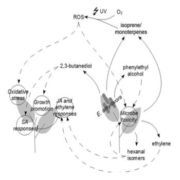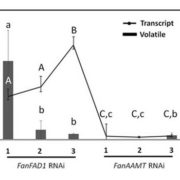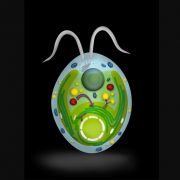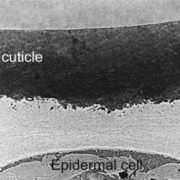Characterizing the serotonin biosynthesis pathway upon aphid infestation in Setaria viridis leaves (bioRxiv)
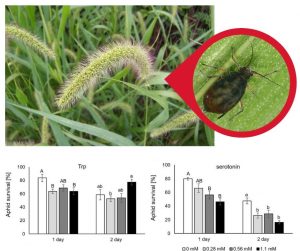 In response to biotic stresses, plants produce chemical defenses to reduce damage. Adaptations to insect infestation involve synthesis of Trp-derived metabolites, leading to metabolome alterations. Here, Dangol et al. analyzed the transcriptomic and metabolomic effects after herbivore feeding in Setaria viridis, the green foxtail millet. Using transcriptomic and RNA-seq data mapped to the S. viridis reference genome, and untargeted liquid chromatography-tandem mass spectrometry (LC-MS/MS), the authors detected transcriptome changes caused by aphid and caterpillar feeding. The pathway enrichment analysis revealed secondary metabolites were enriched after infestation. By using rice homologs, they identified highly expressed S. viridis genes involved in the biosynthesis of serotonin, which is triggered by aphids: Trp decarboxylase (TDC) and tryptamine 5-hydrozylase (T5H). After TDC1 ectopic expression in tobacco, immunoblot and Gas chromatography-mass spectrometry (GC-MS) analysis suggest TDC1 converts Trp into tryptamine. Furthermore, tryptamine and serotonin were added to artificial in vitro diet bioassays, validating serotonin’s adverse effect. (Summary by Ana Valladares). bioRxiv. 10.1101/642041
In response to biotic stresses, plants produce chemical defenses to reduce damage. Adaptations to insect infestation involve synthesis of Trp-derived metabolites, leading to metabolome alterations. Here, Dangol et al. analyzed the transcriptomic and metabolomic effects after herbivore feeding in Setaria viridis, the green foxtail millet. Using transcriptomic and RNA-seq data mapped to the S. viridis reference genome, and untargeted liquid chromatography-tandem mass spectrometry (LC-MS/MS), the authors detected transcriptome changes caused by aphid and caterpillar feeding. The pathway enrichment analysis revealed secondary metabolites were enriched after infestation. By using rice homologs, they identified highly expressed S. viridis genes involved in the biosynthesis of serotonin, which is triggered by aphids: Trp decarboxylase (TDC) and tryptamine 5-hydrozylase (T5H). After TDC1 ectopic expression in tobacco, immunoblot and Gas chromatography-mass spectrometry (GC-MS) analysis suggest TDC1 converts Trp into tryptamine. Furthermore, tryptamine and serotonin were added to artificial in vitro diet bioassays, validating serotonin’s adverse effect. (Summary by Ana Valladares). bioRxiv. 10.1101/642041


